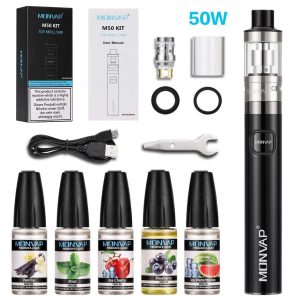It’s easy to stop smoking, just stop!
Yes, that sounds simple but it can be quite the opposite. It about finding out what is the easiest way to stop smoking for you. We are all unique and there is definitely a way for you to do this, your way.

I Quit!
So, what is the easiest way to quit smoking?
Unfortunately, whilst quitting is simple it isn’t always easy. In this and my next post we are going to take a peak at some of the options available to you.
Once upon a time there was literally only the one way, and that was cold turkey. Now we are in the 21st century there are so many options available. It can be quite confusing and analysis paralysis can set in when trying to make the right choice.
If you have practiced quitting smoking before, it may be that the method or technique you tried wasn’t the right one for you right then.
With so much choice you have plenty of options and it might be a combination that works best for you. No matter which method or methods you decide to use to stop smoking the foundation to build on is about mindset – getting ready to quit smoking and creating a written plan.
Don’t give up quitting
Ultimately, there is no right, wrong or easy way it is simply what works for you. No matter what you decide the most important thing is to create a personal plan and write it down.
Your beliefs and the stories you tell yourself can make stopping smoking more difficult or much easier. You can read about busting these myths here.
Maybe some ‘away from’ motivation will help, read about some of the facts about smoking. If they don’t do it for you read on to see what choices you have.
Here is a whistle-stop tour of some of your options and the potential pros and cons, plus an idea of costs.
Going cold turkey
In the past using will power only was the only way on its own. Using willpower strategies can be powerful tools when trying to manage smoking cravings. The idea is that you make the conscious decision not to smoke. You use your conscious mind to overcome the craving.
For example, a craving comes along and you hear a voice in your head say: “Go on, it’s one cigarette won’t hurt”.
You then counter that thought by saying to yourself something like: “If I have one cigarette now, I’ll just end up going back to smoking. I really don’t want that, I am not going to smoke.”
Pros: These positive thoughts challenge your craving thoughts. They help you reinforce the progress you’ve made, motivate you and create a new habit of not smoking.
After 24 hours you will be free of most of the chemicals. Nicotine withdrawal symptoms usually reach their peak 2 to 3 days after you quit so by the end of a week you are over the worst.
The feeling of achievement of doing it on your own, beating all the odds.
Cons: It is suggested that only between 4-7% of people who try cold turkey succeed.
Using willpower only is hard work, it takes a lot of energy and effort to maintain until the new behaviour becomes a habit.
If you force yourself to stop smoking whilst you still believe it is what you want to do you set up an internal conflict of self-denial. This just adds to the stress and most smokers use smoking to reduce stress.
There is more chance that you might be out with friends and are offered a cigarette and, without even thinking you say yes. Willpower uses only the conscious mind whereas smoking is a habit within the unconscious mind.
Investment: It is totally cost-free.
Cutting down
Reducing the number of cigarettes, you smoke a day. You might decide to make the time between your smokes longer. You set a plan of reducing the number per day over a period of time until you stop completely.

No thanks, I’ll have one later.
Pros: It can make you feel like you are in control. You can see the difference by the number of cigarettes or the amount of tobacco left at the end of the day.
Mentally it feels like you are quitting and working towards the long-term goal. It gives you the opportunity to tell people you are working on quitting.
In 2013 the NHS suggested a pragmatic approach of “harm reduction” by reducing the amount you smoke.
Financially you can see a difference as you spend less per week in relation to your reduced smoking.
Cons: By cutting down how much you smoke is not actually getting rid of the addiction or ridding your body of nicotine.
When you cut down the amount you smoke you tend to count the hours (or minutes) until your next smoke.
As it produces a constant state of ‘withdrawal’ you are focused 100% on smoking pretty much all day. Your mind will literally play tricks on you by telling you about the ‘pleasures’ and how the denial of them has always made you feel bad. Your mind is filled with either thought of smoking or thoughts of deprivation.
Investment: There is no financial cost and there is a cost-saving if you do reduce the amount you smoke.
Nicotine replacement therapy (NRT)
This consists of plenty of options such as gum, sprays, lozenges, inhalers and patches.
NRT was created to reduce the intensity of withdrawal from nicotine easier to handle. It works by giving you small, measured doses of nicotine. This can be absorbed through your skin and/or membranes of the mouth, throat, and/or nasal passages.
The NHS states that when NRT is used properly along with a behavioural program, you are 4 times more likely to quit smoking for good.
Pros: It helps to reduce the intensity and severity of your cravings and withdrawal symptoms making it easier to deal with. You can then cope with day to day life more easily. It helps you keep motivated whilst you are quitting. You can use a combination of different products to help you control your cravings.
Cons: NRT alone only deals with physical addiction. It takes around 12 weeks or more to be weaned off nicotine. There can be some unpleasant side effects. It doesn’t consider the emotional and psychological aspects of smoking. It can take a long time to create the habit of not smoking.
Investment: NRT is available on prescription from your GP currently £8.60 per item. They also include regular meetings with a nurse.
If you purchase from Amazon a pack of patches costs between £8.27 – £22.80 for 7 days. A packet of 96 lozenges is around £13.00.
Medication
There are two types of medication that are available in the UK and approved for use by the NHS. These are Zyban (bupropion) and Champix (varenicline). They are not nicotine replacements.
Zyban alters the level of some feel-good chemicals in your brain. How it works isn’t fully understood. Although it seems to reduce the withdrawal symptoms that you experience when you stop smoking. It also works to reduce your need to smoke. You start taking Zyban 1 week before your quit date.
Champix acts on the same receptors in the brain as nicotine and helps to reduce your craving to smoke. It also reduces the pleasure you feel if you do have a cigarette, therefore making it less desirable to smoke. You start taking it for a couple of weeks before your quit date and continue for around 3 months.
Pros: Both help to reduce the desire and pleasure of smoking. They are easy to take and you will have regular sessions with your nurse. In 2006 the US FDA ran some trials, they found that people using Champix (22%) were more successful at quitting smoking than those using Zyban (bupropion hydrochloride) (16%) as a quit smoking aid. For those people taking a placebo, abstinence at the one-year mark was approximately 8%.
Cons: You can only get them by prescription. You have to remember to take them regularly. Both of the medications can have horrible side effects. Personally, I tried both but couldn’t continue with either.
Investment: It is only available on prescription in the UK, the cost is £8.60 per item.
E-Cigarettes & vaping
An e-cigarette or vape allows you to inhale nicotine in a vapour rather than smoke. They work by heating an e-liquid that typically contains nicotine, propylene glycol and/or vegetable glycerine, and flavourings. You can get nicotine-free e-liquids too.
Pros: E-cigarettes and vapes don’t burn tobacco and they don’t produce tar or carbon monoxide. These are two of the most damaging elements of tobacco smoke. They can be smoked inside as the vapour evaporates. There is no second-hand smoke affecting other people. The e-liquid comes in a wide range of flavours so it can be more interesting than plain tobacco flavour. There are many different kinds of e-cigarettes. You can wean yourself off nicotine by reducing the number of times you use the device or reducing the strength of the nicotine in the e-liquid.
Cons: It can be expensive. You may remove the physical addiction but you still have the habit and beliefs. There are many unknowns about vaping, including how they affect physical health over the long term. In particular, be aware of the possibility of popcorn lung. A high percentage of people that vape also smoke cigarettes. They are not provided or approved by the NHS.
Investment: They range from £10 to £160 plus the cost of the bottles of e-liquid.
So how do you choose?
We’ve discussed briefly a few of the most talked-about methods to help you quit smoking. Maybe you’ve tried some of these or just heard about them. It’s not always one or the other. As you will have read there are pros and cons for all the solutions. I would suggest you do a little more research to find out the full story of all of the methods available. Talk it through with your health care provider and with friends or family, they can make recommendations too. Friends and family can be huge sources of support for you.
Do you want more choices?
You can find out about some more options in my next post, how to quit smoking naturally.
Join my FREE Hearties Quit Smoking Group
Many people find it hard to quit if they haven’t when they have their event. Everyone thinks it should be easy but it’s not. Join others that are on their heart journey and want to quit smoking. See you over there soon.



